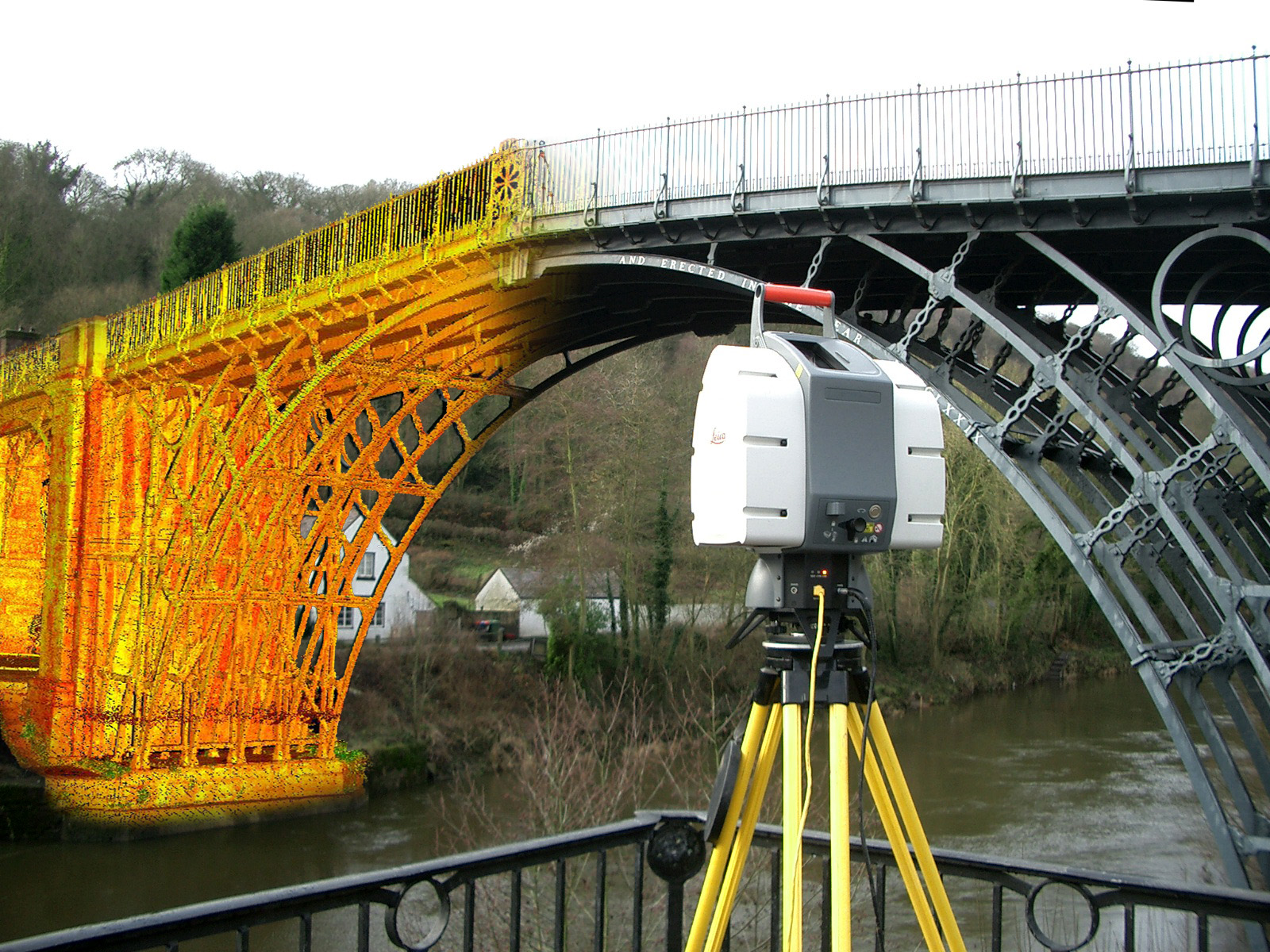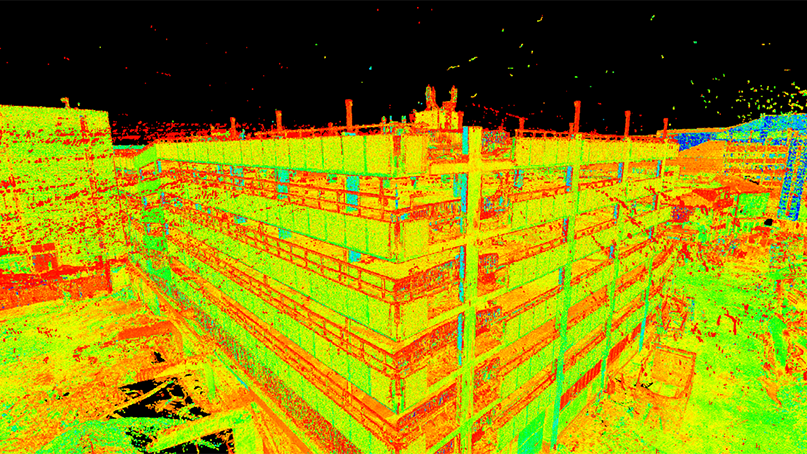Checking out the Applications of 3D Laser Scanning in Archaeology and Cultural Heritage Preservation
The assimilation of 3D laser scanning modern technology in archaeology and cultural heritage preservation marks a substantial development in how historic sites and artifacts are recorded and examined. This non-invasive approach gives specific spatial information, disclosing detailed information that were previously challenging to catch. As the applications of this modern technology remain to evolve, various implications for preservation, education and learning, and documents arise, inviting further expedition right into its transformative effect on the field.
Recognizing 3D Laser Scanning Innovation
3D laser scanning technology has actually changed the field of archaeology by providing specific and in-depth spatial information. This sophisticated technology uses laser beam of lights to capture numerous data factors from an item or website, producing a highly exact three-dimensional depiction (3D Scanning). The resulting point clouds can reveal elaborate details of historical sites, structures, and artifacts that may be invisible to the nude eye
Using this technology, excavators can document the specific dimensions, forms, and settings of things with unmatched accuracy. This technique lessens the danger of human error and removes the need for extensive hand-operated measurements. The data gathered can be assessed and shared quickly, promoting collaboration among researchers. By integrating 3D laser scanning with GIS and various other electronic devices, excavators boost their capability to imagine and translate historical contexts, resulting in much deeper insights right into old societies and atmospheres.
Enhancing Historical Documentation
3D laser scanning considerably improves archaeological documentation through its ability to produce precise website maps. This technology helps with thorough artifact evaluation, offering understandings that traditional approaches may neglect. Additionally, it assures the conservation of contextual data, which is important for comprehending the partnerships within historical sites.
Precise Website Mapping
While standard mapping approaches frequently deal with capturing the elaborate information of archaeological sites, progressed laser scanning innovation uses an advanced strategy to exact site mapping. This technique allows excavators to develop highly described and exact three-dimensional depictions of sites, showcasing topographical variants and structural features with amazing integrity. The ability to catch millions of data points in an issue of mins permits detailed documentation, which can be easily updated and shared amongst scientists. In addition, laser scanning promotes the dimension of complicated geometries that would certainly be tough to evaluate making use of traditional devices. Consequently, this technology boosts the accuracy of site maps, adding significantly to the preservation and understanding of social heritage resources.
Thorough Artifact Evaluation
Laser scanning innovation significantly boosts the analysis of historical artifacts, giving researchers with extraordinary detail and precision. This method records elaborate surface area textures, measurements, and features that standard documentation strategies may ignore. By generating high-resolution 3D designs, scholars can closely take a look at artifacts without the danger of damages inherent in physical handling. This precision permits better relative researches, allowing specialists to determine production methods, stylistic variants, and potential cultural value. The ability to control and visualize information in 3 measurements promotes a much deeper understanding of artefact performance and usage. Generally, laser scanning cultivates an extra extensive technique to historical documentation, guaranteeing that vital info concerning artifacts is maintained for future research and education.
Preservation of Contextual Data
Protecting contextual data is essential for boosting historical documents, as it guarantees that searchings for are recognized within their initial environmental and social structures. 3D laser scanning modern technology greatly contributes to this conservation effort by catching thorough spatial relationships amongst artifacts, frameworks, and their environments. By generating precise 3D designs, excavators can document the precise locations and positionings of items sitting, facilitating a thorough understanding of their context. This modern technology enables scientists to take another look at and analyze websites long after excavation, preserving the honesty of contextual details. Furthermore, digital documents produced with scanning can be shared globally, cultivating collaborative research study and public engagement. Ultimately, protecting contextual data through 3D laser scanning enriches historical stories and advertises a much more extensive recognition of social heritage.
Conservation of Cultural Heritage Sites
As developments in modern technology remain to progress, the preservation of cultural heritage websites has actually ended up being progressively dependent on cutting-edge approaches such as 3D laser scanning. This technology permits for the detailed documents of frameworks, artefacts, and landscapes, capturing their specific dimensions and spatial connections in a non-invasive manner. By producing high-resolution 3D designs, scientists can keep an eye on and assess damage patterns, making it possible for proactive preservation approaches.
In addition, 3D laser scanning assists in the sharing of thorough website data with the international community, promoting collaboration amongst historians, excavators, and preservationists. These versions work as very useful sources for education and learning and public interaction, raising recognition of social heritage concerns. Furthermore, the electronic documents created can protect versus loss as a result of environmental variables, vandalism, or overlook. Overall, 3D laser scanning represents a transformative technique to the preservation of cultural heritage, making sure that these sites can be researched and valued by future generations.

Remediation and Reconstruction Efforts
The comprehensive documentation accomplished via 3D laser go to these guys scanning plays a significant role in repair and restoration initiatives within archaeology. This innovation offers accurate measurements and high-resolution images, allowing for exact digital models of artifacts and frameworks. These models function as necessary referrals during restoration processes, allowing archaeologists to visualize the initial style and make notified decisions regarding products and techniques needed for repair service.
Furthermore, 3D laser scanning assists in the restoration of harmed or lost aspects by producing detailed replicas. This procedure aids in making sure that restorations preserve historic honesty while additionally enabling cutting-edge methods to bring back websites. The capacity to assess wear patterns and architectural weak points via scanned data improves understanding of a site's historical context and its usage gradually. Consequently, 3D laser scanning not just maintains the physical aspects of cultural heritage yet additionally improves the narrative of background, assisting future repair ventures.
Educational and Research Study Opportunities
The combination of 3D laser scanning in archaeology opens significant educational and study chances. Academic collaborations can boost the understanding of ancient sites, while specialized training workshops equip experts with important skills for utilizing this innovation. Together, these campaigns cultivate a richer interaction with archaeological practices and methods.
Academic Collaborations in Archaeology
Collective initiatives in archaeology have come to be significantly necessary for advancing both academic and study opportunities. By cultivating partnerships among universities, research establishments, and cultural heritage organizations, these collaborations help with the exchange of knowledge and sources, enhancing the high quality of historical research studies. Joint projects commonly leverage varied know-how, permitting cutting-edge techniques and comprehensive evaluations, specifically in the application of innovations like 3D laser scanning. Such cooperations likewise advertise interdisciplinary strategies, engaging fields such as history, conservation, and location science. Furthermore, academic collaborations commonly lead to the development of brand-new curricula and training programs, preparing the next generation of excavators to efficiently utilize sophisticated technologies in their work. Inevitably, these partnerships add to the preservation and understanding of cultural heritage.
Educating Workshops for Professionals
Training workshops for experts in archaeology are progressively important for boosting skills in the application of sophisticated innovations such as 3D laser scanning. These workshops supply individuals with hands-on experience in utilizing cutting-edge tools and software, cultivating a much deeper understanding of information capture and analysis processes. Experts can discover to develop accurate electronic designs of historical sites, which markedly aid in paperwork and conservation initiatives. Additionally, these training sessions often consist of discussions on ideal methods and situation studies, advertising understanding exchange among individuals. By spending in continual education and learning, professionals can stay upgraded on advancing innovations, ultimately enhancing the performance of their study and cultural heritage preservation efforts. This commitment to ability improvement is necessary for advancing the area of archaeology.
Future Patterns in 3D Laser Scanning for Archaeology
As advancements in innovation remain to reshape different areas, the future of 3D laser scanning look at this now in archaeology promises to boost both the precision and efficiency of site documentation and analysis. Emerging fads show an expanding assimilation of expert system and artificial intelligence, promoting automated information handling and interpretation. This advancement will certainly enable excavators to analyze complicated datasets faster, leading to faster insights right into historic contexts.
The combination of drone innovation with 3D laser scanning is most likely to increase, allowing thorough aerial surveys of archaeological websites that are difficult to access. The increasing price of scanning devices will certainly democratize accessibility, encouraging smaller organizations and independent researchers to utilize these devices properly. Additionally, improvements in digital reality and increased fact will certainly make it possible for immersive experiences for public engagement and education and learning, making archaeological searchings for extra obtainable and interactive. These trends jointly signify a transformative future for archaeology, improving preservation efforts and expanding the self-control's outreach.
Regularly Asked Concerns
Just How Much Does 3D Laser Scanning Devices Cost?

What Are the Limitations of 3D Laser Scanning?
The limitations of 3D laser scanning include high prices, potential information processing obstacles, sensitivity to environmental conditions, and problem catching intricate details in complicated surfaces, which can influence the accuracy and completeness of checked depictions. (3D Scanning)

Can 3D Laser Scanning Be Made Use Of Underwater?
Yes, 3D laser scanning can be made use of undersea, yet it calls for specific tools and strategies to conquer obstacles such as water distortion and limited visibility. Effective applications have actually been demonstrated in aquatic archaeology and underwater studies.
Exactly how Lengthy Does a Scanning Task Generally Take?
A scanning task usually takes anywhere from a couple of days to several weeks, depending on the intricacy and size of the location being checked, in addition to the prep work and post-processing needs associated with the job.
Are There Specific Software Application Needs for Processing 3D Scans?
Yes, certain software application demands for refining 3D scans consist of programs with the ability of dealing with large factor clouds, such as Autodesk Wrap-up, Cyclone, or MeshLab. These devices help with analysis, visualization, and integration right into different applications efficiently.
The combination of 3D laser scanning technology in archaeology and cultural heritage preservation notes my sources a substantial advancement in how historic sites and artifacts are recorded and analyzed. 3D laser scanning modern technology has revolutionized the field of archaeology by giving accurate and comprehensive spatial data. As improvements in innovation continue to progress, the preservation of cultural heritage sites has actually come to be significantly reliant on innovative approaches such as 3D laser scanning. As improvements in modern technology continue to improve various fields, the future of 3D laser scanning in archaeology promises to enhance both the precision and performance of site documentation and analysis. The integration of drone technology with 3D laser scanning is likely to broaden, allowing thorough airborne studies of historical websites that are hard to gain access to.